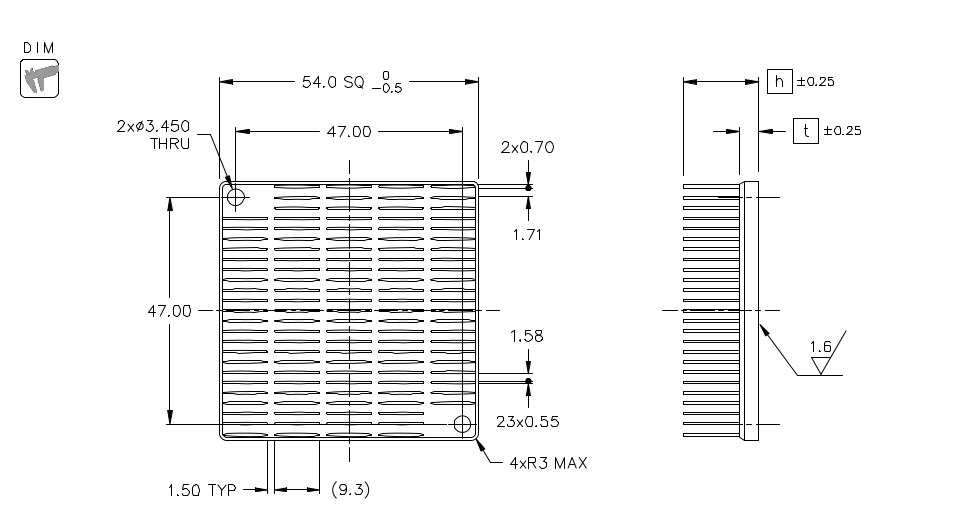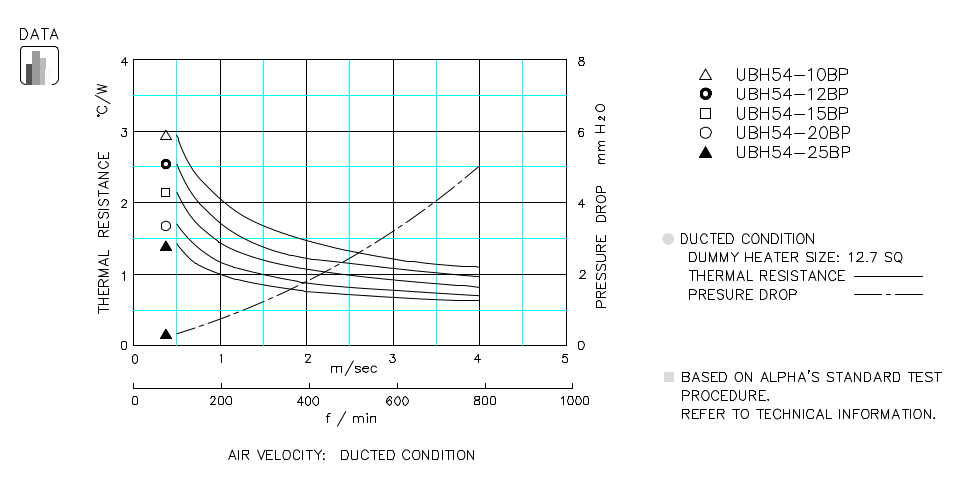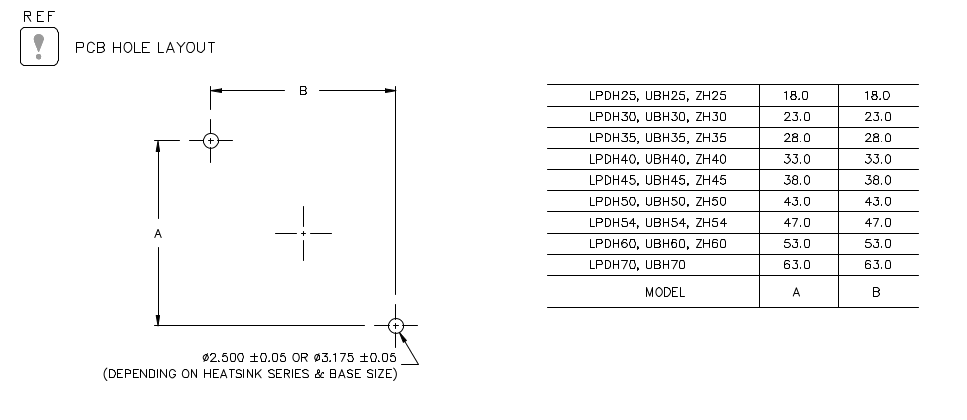| Heat Sink (Height h) |
|---|
|
We do offer a version of this heat sink with a 7mm - 9mm height. |
The thermal interface materials listed here are phase change materials (PCMs). These PCMs are naturally tacky and will be pre-applied to the heat sink. However, PCMs may peel-off from the heat sink base when removing the release liner prior to heat sink installation. Since PCMs rely on their natural tackiness instead of an adhesive, this can happen. In light of this, we recommend that our customers apply additional pressure to the PCMs prior to removing the protective liner to allow the PCMs to wet out on the heat sink surface (refer to instruction item #4 below). Storage and Handling Instruction
- To order individual components, such as push pins or springs,
please visit each link/page. -
If heatsink customization (size, hole layout, etc...) is required,
we recommend using the .
MOQ is 1 piece, typical lead time is 1-2weeks.








